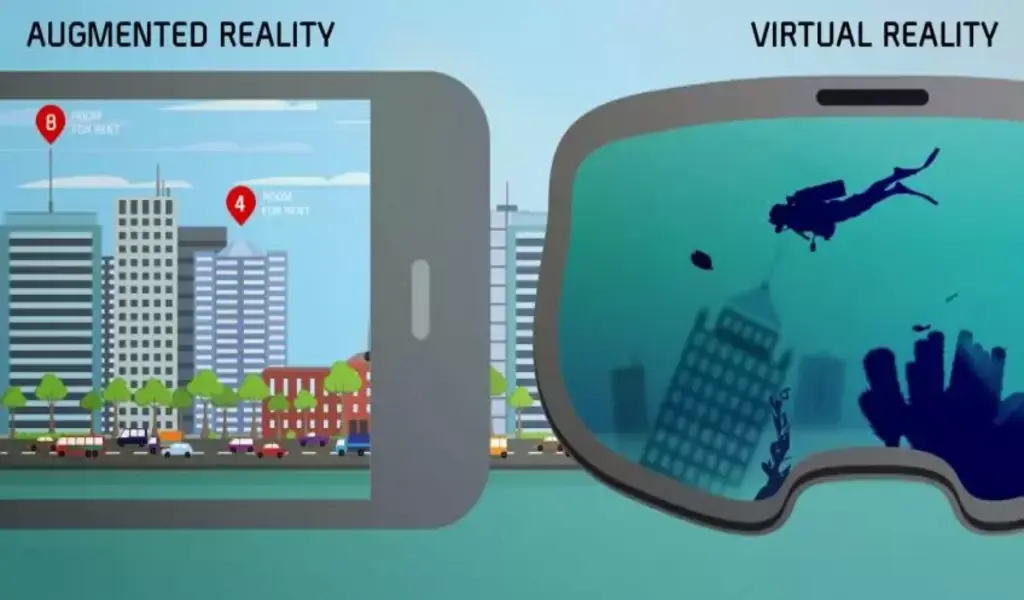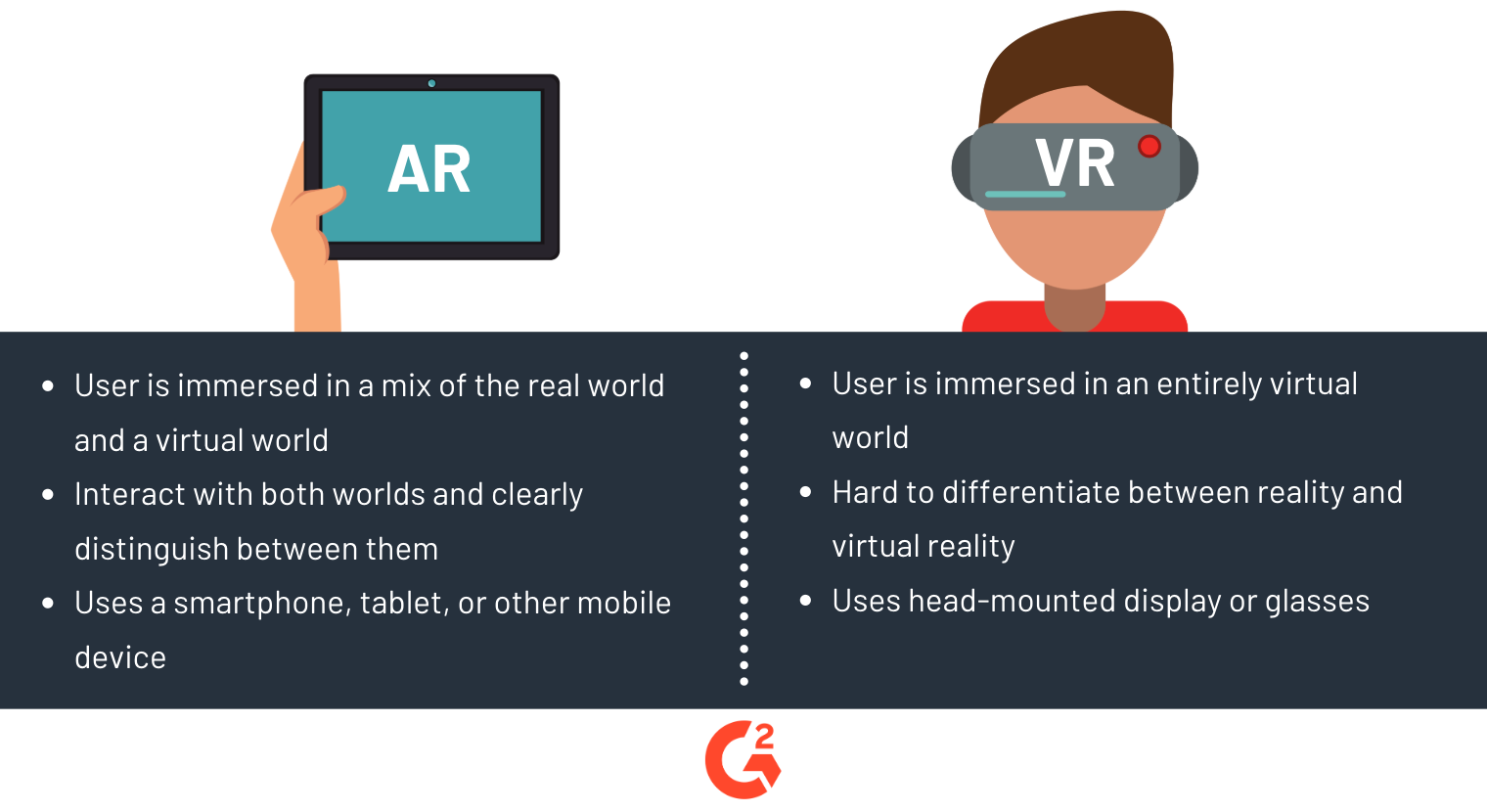Tech
Augmented Reality vs Virtual Reality: What’s The Difference And Which Is Better?

Augmented Reality vs Virtual Reality – Augmented Reality and Virtual Reality are two of the hottest buzzwords in the tech industry.
This article will explore the differences between the two and help you decide which one is right for you.
Introduction:
The terms Augmented Reality (AR) and Virtual Reality (VR) have become increasingly popular in recent years.
From gaming and entertainment to education and healthcare, these technologies are transforming the way we experience the world.
While AR and VR are often used interchangeably, they are actually two distinct technologies with different applications and features.
This article will explore Augmented Reality vs Virtual Reality, their advantages and disadvantages, and their various use cases.
By the end of this article, you will better understand these two technologies and be able to determine which one is right for you.
Augmented Reality vs Virtual Reality: What’s the Difference?
Augmented Reality (AR)
AR is a technology that overlays digital content onto the physical world, allowing users to interact with the real world while simultaneously experiencing digital elements.
AR is often used in mobile apps and can be experienced through a smartphone or tablet camera.
Some examples of AR include:
- Snapchat filters that add digital masks or accessories to a user’s face
- Pokémon Go, a game that uses AR to place virtual creatures in the real world
- IKEA Place, an app that lets users place virtual furniture in their homes to see how it would look
AR is also used in industries like healthcare, where it can be used for surgical training or to assist in medical procedures. In architecture and construction,
AR can be used to create virtual models of buildings and structures, allowing architects and builders to see how their designs would look in the real world.
Virtual Reality (VR)
VR is a technology that creates a completely digital environment, immersing users in a simulated world. VR is often experienced through a headset or goggles, and it can provide a fully immersive experience with 360-degree views.
Some examples of VR include:
- Video games that allow users to step into a digital world and interact with it
- VR roller coasters that simulate the experience of riding a roller coaster
- Virtual tours of real-world locations, such as museums or landmarks
VR is also used in industries like education, where it can be used to create immersive learning experiences.
In healthcare, VR can treat patients with conditions like PTSD by exposing them to virtual environments that help them confront and overcome their fears.
Advantages and Disadvantages of Augmented Reality and Virtual Reality
Advantages of Augmented Reality
- AR allows users to experience the real world while still engaging with digital content
- AR is often more accessible than VR, as it can be experienced through a smartphone or tablet
- AR has a wide range of potential use cases in industries like healthcare, education, and retail
Disadvantages of Augmented Reality
- AR experiences can be limited by the capabilities of the device used to access them
- AR experiences can be affected by external factors such as lighting and movement
- AR experiences can be less immersive than VR experiences
Advantages of Virtual Reality
- VR provides a fully immersive experience that can be difficult to replicate with other technologies
- VR can be used to simulate real-world environments and scenarios for education, training, and therapy
- VR can provide unique gaming and entertainment experiences that are not possible with other technologies
Disadvantages of Virtual Reality
- VR experiences can be expensive to create and access, requiring specialized hardware and software
- VR experiences can be disorienting or uncomfortable for some users, leading to
- VR experiences can cause motion sickness, eye strain, and other physical discomforts
- VR can be isolating, as it often requires users to be fully immersed in the digital environment
- VR experiences may not be suitable for all ages or individuals with certain medical conditions
Use Cases of Augmented Reality and Virtual Reality
Use Cases of Augmented Reality
- Retail: AR can enhance the shopping experience by allowing customers to see how products would look in their homes or bodies.
- Education: AR can be used to create interactive learning experiences, such as virtual dissections or historical tours.
- Healthcare: AR can be used for surgical training, medical procedures, and patient education.
Use Cases of Virtual Reality
- Gaming: VR can provide immersive gaming experiences, allowing users to step into a digital world and interact with it.
- Education: VR can be used to create simulations of real-world scenarios, such as flight simulations or medical procedures.
- Therapy: VR can be used to treat patients with conditions like PTSD by exposing them to virtual environments that help them confront and overcome their fears.
Conclusion
In conclusion, Augmented Reality and Virtual Reality are two exciting technologies with unique applications and features. AR overlays digital content onto the physical world, while VR creates a completely digital environment.
Both have advantages and disadvantages and have a wide range of use cases in industries like retail, education, and healthcare.
Ultimately, the choice between AR and VR will depend on your needs and preferences.
AR is often more accessible and less expensive than VR, but VR provides a fully immersive experience that can be difficult to replicate with other technologies.
By understanding the differences between AR and VR, you can choose the technology that is right for you, and find a suitable augmented reality app development company for your idea.
RELATED CTN NEWS:
The Revolutionary Impact Of Machine Learning In Healthcare
Top 10 Essential Productivity Software Solutions For 2023
How To Build A Website From Scratch: Steps To Build Your Dream Website

































